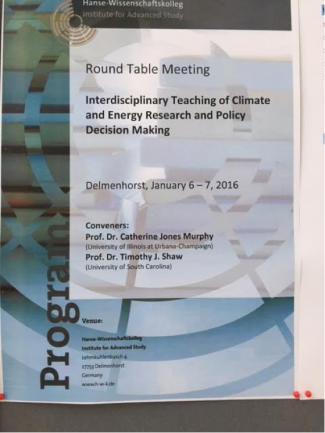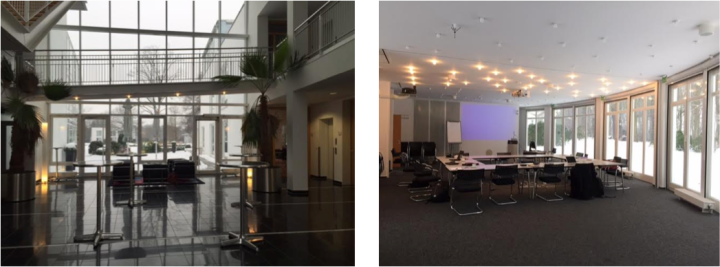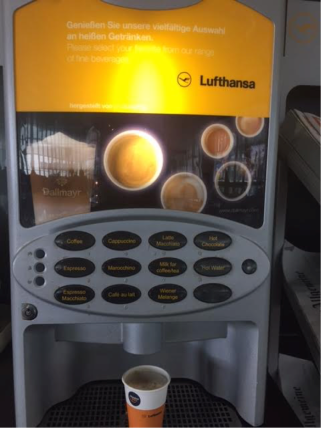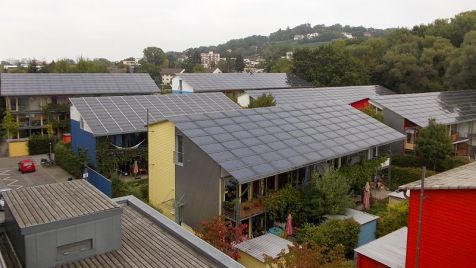A couple of weeks ago I was fortunate enough to go the Hanse Institute for Advanced Study (“HWK”) in Delmenhorst, Germany, for a round-table discussion called “Finding Common Ground: Interdisciplinary Teaching of Climate Change and Energy Research and Policy Decision Making.”

The HWK is a beautiful facility that hosts small conferences and has apartments for Fellows from all over the world who travel to Delmenhorst to work with local scientists on carefully chosen topics: neuroscience, marine and climate, energy, and social science.

I was officially a co-organizer of the roundtable with my good friend Tim Shaw, an analytical chemist/chemical oceanographer from the University of South Carolina. Tim measures trace metals in the ocean to infer how nutrients and contaminants cycle throughout the world’s water systems. He and I have worked together before on projects measuring where engineered nanoparticles end up in model ecosystems.1,2 But in my lab I specifically study metal nanoparticles, and at first I wasn’t sure how that work would connect to climate change, or whether it could help convince the people from business and government sectors at our roundtable to do something now to save our planet later.
After our meeting, I could see the connections! Our group of 10 participants was incredibly diverse. Half of us were American, half were German. Some were in academia, some in government, and some in business. We covered the disciplines of political science, behavioral economics, business, philosophy, public health, geology, chemistry, physics, biology, and oceanography. But we all had common ground: strong interest in sustainability, and strong interest in doing something that would provide a secure foundation for making good decisions in a changing global climate. We also drank a great deal of coffee from excellent automated cappuccino machines similar to this one:

Even though I was one of the organizers, I still learned many things at the meeting. For instance, a warming world would increase the prevalence of multidrug-resistant antibiotic strains of bacteria. Icebergs, as they break off and melt, add a surprising amount of iron to the ocean. Human population growth is an underlying cause of human-induced climate change, and some countries might be on the path to using family planning/birth control as a way to combat global warming(!). Insurance companies are pioneers in how big business connects to climate change, because about half the world’s population lives near a coast, and more extreme weather (insurance intensive) events like hurricanes and floods are predicted to occur as the world warms. A reduction in meat consumption by people would have noticeable effects in reducing greenhouse gas (methane) emissions, because fewer cattle would be around to produce, um… gas.
I also learned that most of my fellow attendees agree on one thing: a meaningful life is more important to achieve than a happy life.
And what did I contribute? I was the person with solutions. I told the group about all the solutions to climate change issues that nanotechnology can enable: improved solar cells; dissolvable electronics that eliminate electronic waste; improved water purification technologies; improved batteries that can make solar and wind power more viable.
(Germany appears to be far ahead of the U.S. in sustainability, by the way. Half of everything in Germany comes from a recycled source material, and over a quarter of the energy produced in Germany now comes from renewable sources like wind, biomass, and solar. This was one reason that it made sense to hold our meeting in Germany!)

So what are we going to do as a result of this meeting? We’re going to write a book! It will be all about the connections between climate change, energy, political economy, and social science. We will have experts on particular disciplines write chapters on “what you need to know” in each area, and then we will all contribute to transdisciplinary, integrative chapters that show the connections between the fields. Overall, we want to show that sustainability (environmental, societal, and economic) is good for people, businesses, and the planet. These integrative chapters should be readable by any adult, and we hope that by finding common ground, common solutions can be found. We want anyone concerned about the sustainability of our planet to read our book – especially those who advise governments. And this collaboration shows that, even in the Internet Age, it was really important for us to come together in person and discuss what is important to connect science and society.
EDUCATIONAL RESOURCES
- UCAR Center for Science Education activity: Studying CO2 from Pole to Pole: (high school)
- Climate Generation middle school curriculum: Next Generation Climate (grades 6-8)
- Ferry, J. L.; Craig, P; Hexel, C.; Sisco, P. N.; Frey, R.; Pennington, P; Fulton, M.; Scott, G.; Decho, A.; Kashiwada, S.; Murphy, C. J.; Shaw, T. J. “Transfer of Gold Nanoparticles from the Water Column to the Estuarine Food Web,” Nature Nanotech. 2009, 4, 441-444. doi: 10.1038/nnano.2009.157
- Burns, J.; Pennington, P.; Sisco, P.; Frey, R.; Kashiwada, S.; Fulton, M.; Scott, G. I.; Decho, A. W.; Murphy, C. J.; Shaw, T. J.; Ferry, J. L. “Surface Charge Controls the Fate of Au Nanorods in Saline Estuaries,” Environ. Sci. Technol. 2013, 47, 12844-12851. doi: 10.1021/es402880u
